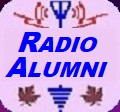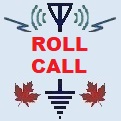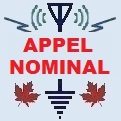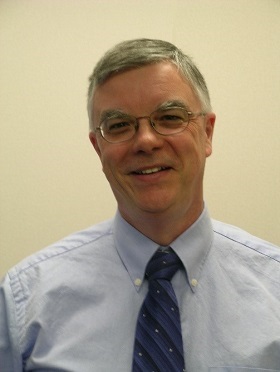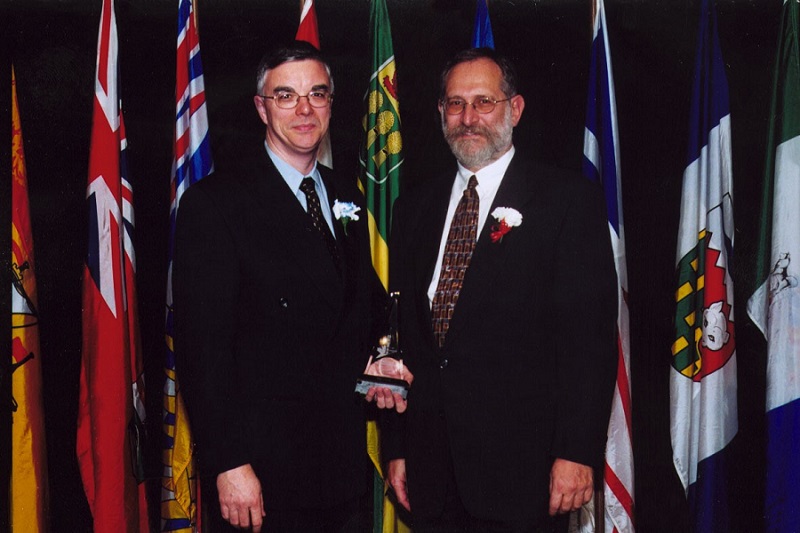|
|
RADIOALUMNI.CA |
|
|
CANADIAN EPICS IN RADIOCOMMUNICATION ALUMNI WHO LIVED THE ADVENTURE OF RADIO WIRELESS TELEGRAPHISTS - SPARKS - RADIO PIONEERS RADIO OPERATORS - RADIO TECHNICIANS RADIO TECHNOLOGISTS - RADIO ENGINEERS RADIO INSPECTORS - SPECTRUM MANAGERS |
|
ÉPOPÉES CANADIENNES EN RADIOCOMMUNICATION LES ANCIENS QUI ONT VÉCU L'AVENTURE DE LA RADIO TÉLÉGRAPHISTES SANS FIL - PIONNIERS DE LA RADIO OPÉRATEURS RADIO - TECHNICIENS RADIO TECHNOLOGUES RADIO - INGÉNIEURS RADIO INSPECTEURS RADIO - GESTIONNAIRES DU SPECTRE |
|
Summary In late 1974 Glen Worsnop, DOC District Manager in Kitchener, along with counterparts from the Department of Transport and the Public Service Commission came to Cambrian College in Sudbury to interview third year electronic technology students for positions as Radio Inspector trainees in the Ontario Region. As I was to later learn, it was a period of rapid expansion for the DOC and there followed several years of active college recruitment for “TIRLS”, a term used in the government’s contract with IBEW, the union representing members of the Electronics Group, denoting employees hired at the Technical Institute Recruitment Level. TIRLs essentially underfilled the working level EL-04 Radio Inspector positions during a well-defined and structured training program. As a result of the interview at Cambrian both I and Patrick Carrey received job offers and upon graduation moved to Toronto to join the Toronto District Office under supervisor John Nosotti. Patrick also had a long career with DOC in the Toronto and Ottawa District Offices and subsequently in Ottawa HQ.
Like the other TIRLs I followed a structured training program designed to move one along a progression through the levels EL-1, 2 and 3 to the “working level” Radio Inspector EL-4. We accompanied Radio Inspectors “on the road” doing inspections and interference work, spent time in authorization learning licensing, learned monitoring in the Spectrum Observation Centre (SOC) and at the Almonte Monitoring Station. I met pretty much the entire group of TIRLs onboard at the time in the Ontario Region at a two week TIRL training session organized in Brantford by Bill Willis. And of course there were endless hours of Morse Code practice to attain 20 words per minute. To work on my code I picked up a Yaesu FT-101E and was active on 20 metres for a period time. Although I picked up the Advanced Amateur and Digital Radio certificates I didn’t remain active in amateur radio.
About the time that I was completing my Radio Inspector training the opportunity arose to apply for one of the new EL-06 technologist positions in the Ontario Regional Office (which was co-located with the Toronto District Office at 55 St. Clair Avenue East). Also about this time I was asked to see newly-appointed Regional Superintendent of Enforcement (later called Spectrum Control) Mike Power who wished to speak with me. Mike asked me about a document I had put together on audio rectification to assist those experiencing this form of interference to their audio devices. I didn’t attach much significance to the discussion at the time but I later figured out that Mike was scouting for the EL-06 competition he was about to launch. I was encouraged to apply even though I had yet to even receive the official promotion to the “working level” EL-04.
I was successful in the EL-06 competition without having actually spent any time as an EL-04 which was unusual. I had the good fortune of joining a great group under Mike Power consisting of Jenne Looper, Bob Bissell, Serge Bertuzzo and Bill Willis. Most of my work dealt with improving the private sector’s ability to assist members of the public with their interference problems or obviating interference in the first place. I also dealt with HQ personalities such as Alex Windsor, Maurice Drew and John Ollerhead in mitigating instances of cross-border interference with the US. When Bill retired I was asked to take over his technical training responsibilities and at that time the emphasis was on familiarizing our ELs with the rapidly emerging digital communications technologies.
While in the Ontario Regional Office I was mentored and given really helpful career advice and support by Mike Power, Gerry Brushett and Dave Lyon. When Mike transferred to the Toronto District Office to be its Director following the retirement of Bill Stone I was asked to act in his position and won it in the ensuing staffing competition. As Regional Manager of Spectrum Control I got to know my counterparts in the other regions (in particular Maurice Nunas who would later play a role in my move to Ottawa) and in Ottawa HQ during the “SMOC” meetings including one in St. John’s featuring the infamous cod-jigging excursion reported by “The Fly on the Wall” in the IBEW newsletter.
In 1982 Bob Mitchell retired as Director, Government Telecommunications in the region and to my great surprise Dave Lyon asked me to take his place which I did with a great deal of trepidation given that it was a significant departure from my comfort zone in spectrum management. It was a great time to assume the role given the major challenge of the Local Shared Services Modernization project just getting underway wherein the old step-by-step and crossbar telephone switches were to be replaced by new digital switches such as Nortel’s DMS-100 and SL-1. Terminal attachment deregulation had just happened and as a consequence we were able to use competitive tender processes through the Department of Supply and Services to source the new equipment and obtain the best value for the government. We were also heavily involved in the supply of telecommunications services in support of the Pope’s visit and the Western Economic Summit. During the time that I was in this position three different people served as Director General of GTA: Guido Henter, Micheline Desjardins-Chase and John Gilbert.
When Allister Pedersen left the region’s Communications and Culture group in 1988 to work in the MSAT program at the Communications Research Centre, Dave Lyon asked me to replace him. I was not at all interested as this field was quite far removed from my background and interests and I turned down the offer. Undaunted Dave asked me again with the same result but on the third request I accepted. Dave was quite convincing and he was having some serious problems in the delivery of those programs that was consuming much of his time and he wanted me to fix things. This was quite a leap into the world of grants and contributions and a clientele of well-known personalities in Canada’s arts and cultural scene. We were frequently accompanying the minister of the day (Flora MacDonald, Marcel Masse and Perrin Beatty) to various events, openings and cheque presentations. Some of the projects we supported were quite successful (renovations at the Royal Ontario Museum and Elgin Winter Garden Theatre for example) and others were not (the disastrous failure of ICOM, a telecommunications museum in Brantford comes to mind).
As Director General, Communications and Culture I figured that my next logical career move would be to replace Gerry Brushett, who was Deputy Executive Director, whenever he retired. However, in 1993 there was a major upheaval when the new Liberal government was elected and promptly eliminated the Department of Communications sending its programs to Public Works, Canadian Heritage and Industry Canada. In the sorting out of the executives I was on course to be in Canadian Heritage. About that time Maurice Nunas announced that he was leaving his position as Director, Spectrum Management Operations in Industry Canada HQ to join the private sector. Maurice called me to say that I was on a very short list of people he had recommended to the Director General of the Radiocommunication and Broadcasting Regulatory Branch, Bob Jones, to replace him. I corresponded with Bob and he decided to take me on and Deputy Minister Marc Rochon was very supportive of the move when I spoke to him about it since he had the authority to do the transfer. There were a lot of surplus EXs as a result of the new arrangements and I recall Marc saying that “any landing spot is a good spot”. I was relieved to be back on the spectrum side and happy to be joining a number of people that were in Maurice’s directorate who I knew well.
When I arrived in Ottawa Bob Jones was mounting his successful campaign to be elected Director of the Radiocommunication Bureau with the ITU in Geneva and as a consequence he wasn’t around much and Jan Skora was often acting DG. Following Bob’s election Jan won the DG position and he remained my DG until he retired in 2007 when I replaced him and the name of the branch was later changed to the Spectrum Management Operations Branch which included all or the regional operations. I was fortunate to be able to work with Assistant Deputy Ministers like the legendary Mike Binder and Helen MacDonald. The spectrum work was both interesting and challenging and I had the opportunity to work on many major files including antenna siting procedures, licence fees, comparative licensing processes (and the ensuing Telezone lawsuit), spectrum auctions, spectrum policy framework, program rationalization, and spectrum management system modernization to name a few. To the extent that I had any success it was largely due to the efforts of a great staff of very competent people. I retired in 2010 after 35 years of service.
Michael Delamer Connolly 1 May 2017
Clerk of the Privy Council Mel Cappe presenting the Head of the Public Service Award for Excellence in Policy to Mike Connolly in recognition for his work to introduce spectrum auctions in Canada, December 2000. |
|||||||||||||||||
|
|
|||||||||||||||||
|
by Mike Connolly
One day in 1978 at the DOC Toronto District Office, Radio Inspector George Strongitharm received a call from an officer with the Metro Toronto Police. The officer explained that they were investigating the theft of a number of CB radios. They had a suspect and a rookie officer had conducted a search of the suspect's apartment but the officer did not find any stolen CB radios therein. The rookie did report the presence of “an entire wall” of some other radio equipment however. The officer went on to explain that, being a rookie, he had failed to record any details of the equipment such as make, model or serial number so that it might be checked against other reports of stolen goods. The officer was hoping that DOC could gain access and get the information that the rookie had failed to gather. It reminded me of what we were told by an RCMP officer on an enforcement course we had attended. The officer had told us to be on the lookout for anything suspicious during a search and note its presence.
George took down all the details like the suspect’s name (let’s call him “SD”) and address etc. George could find no record of the suspect in any databases. There was some discussion in the office and Bill Hall, who had formerly been with CSE, called a contact at the RCMP as Yugoslavia was a Communist country however SD was not anyone on the RCMP radar. Supervisor John Nosotti decided that George would investigate by inspecting the installation. John also decided to send Patrick Carrey and me to accompany George given the circumstances.
So off we went one evening to the suspect's apartment building near Morningside and Ellesmere in Scarborough. Before heading up on the elevator we headed down to the underground parking as the Metro Police had given George details on SD's vehicle. We found it easily enough and observed a 2 metre rig installed therein. Then we headed up to the apartment which as it turns out was on the top floor of the 20 storey building.
George knocked on SD's door and it was answered by the man himself. George identified himself and explained he was there to inspect the radio equipment reported by the Metro Police. SD permitted us entry. We immediately saw a large wall unit in the living room fully populated by amateur radio equipment including transmitter, receiver, slow scan TV and a teletype and other stuff that I don’t recall. We also noted that there was a large vertical antenna mounted on the balcony the top of which extended up past the roof of the apartment building quite close to the wall. Pat and I set about recording all the details of the installation while George spoke with SD.
George asked SD if he had a radio licence for the equipment and he did not. George asked him if he had an amateur radio operator’s certificate and SD said that he had one from Yugoslavia and he produced a paper written entirely in Yugoslavian. George explained the Radio Act requirements and the penalties for noncompliance and how to go about complying. SD gave George every assurance that he would comply. George said he was taking the Yugoslavian certificate. Later George had it translated and it turned out to not be a certificate but rather a membership in a Yugoslavian amateur radio club. George asked SD if he had any other radio equipment and SD said no he did not. Then George asked him about the 2 metre rig in the car and SD sheepishly admitted that it was also his.
Pat and I finished up with the equipment and we left. We passed along all the information that we had gathered on the radio equipment in SD’s apartment to the police but none of it had been reported as stolen.
A week or two later John Nosotti was reviewing the recently received interference complaint cards when he noticed that one was for the same address, and even the same floor, as where we had paid the visit to SD. From the description it was evident that the complainant’s audio equipment was suffering from audio rectification and it was also evident that SD had not heeded George’s admonitions about obtaining an amateur radio operator’s certificate and licence prior to operating again. John instructed Pat and me to gather sufficient evidence to bring charges for unlicensed operation against SD.
Based on the interference complainant’s report we noted that SD was usually transmitting most evenings so Pat and I chose an evening to return to SD’s apartment building. Having seen the installation we knew that the vertical antenna conveniently extended from the balcony to just above the roof of the building and close enough to the edge that one could actually reach out and touch it. So we positioned ourselves on the rooftop and set up our gear. First we attached an RF ammeter used in ship inspections to the antenna with the other lead clipped on to the roof flashing which we figured would be grounded somewhere given the height of the building. The RF ammeter would likely register some reading if the antenna was energized. Then we set up a Fluke frequency counter with a short whip antenna anticipating that it would register the frequency of the transmission in the same way that we usually used the instrument when performing inspections. We also set up a field strength meter as yet another indication of an operating transmitter. Once set up we started our vigil waiting for SD to fire up the transmitter so we could observe and record the instruments.
We waited for well over an hour with no activity on the instruments whatsoever. We started wondering if SD was even at home and whether we were wasting our time. Rather than carry on waiting I said to Pat that if he held on to my ankles I would hang over the edge of the roof upside down and look into SD’s apartment to see if there was any sign of life. Pat agreed readily.
So over I went with Pat having a firm grasp of my ankles. Sure enough I could hang down low enough to have a view through the patio doors and into the apartment. I immediately spotted SD. He was laying on the couch – wearing nothing – with a copy of Penthouse magazine and he was not pounding brass! I signalled frantically to Pat to haul me back up which he did. Once back on the roof I ran clear across to the other side of the building and started laughing hysterically. I told Pat what I had seen. Pat didn’t believe me and figured that I was just joking around to break the monotony. I offered to hold his ankles and he could see for himself. Pat then hung over the edge of the roof while I hung on to his ankles. Soon he was signalling to be hauled up upon which he ran across the roof and started laughing like crazy.
Once we had stopped laughing we decided that there was unlikely that there would be any transmitting going on so we packed up all the gear and called it a night. The next day we dutifully reported the results to John Nosotti. I am not sure if John’s face was the result of hearing that we had hung upside down over the edge of a 20 storey roof or as a result of what we had reported seeing. It was a curious mixture of incredulity and amusement.
We never had occasion to go back to that apartment building and we didn’t have to face SD. I think he moved away or something thus solving the problem. On various occasions Pat would prompt me to tell the “Pounding Brass” story.
Years later ADM Rob Gordon visited the Ontario Regional Office as part of a farewell tour of sorts as he had announced that he was retiring from DOC. We were at Dave Lyon’s place and I told him the story of how Pat and I had conducted our rooftop investigation. Rob looked at me and said “Pat Carrey? The same Pat Carrey that works in DOS in Ottawa?” He couldn’t believe that the Pat Carrey he knew to be such a serious and responsible manager would have been involved in such an escapade. I guess he didn’t know Pat as well as he thought!
Mike Connolly 28 September 2017 |
|||||||||||||||||
|
Links - Liens
2001
- Head of the Public Service Awards: IC Comes Out a Winner
Bill Hall Remembers His Early Years (from exchanges with Mike Connolly)
|
|||||||||||||||||


